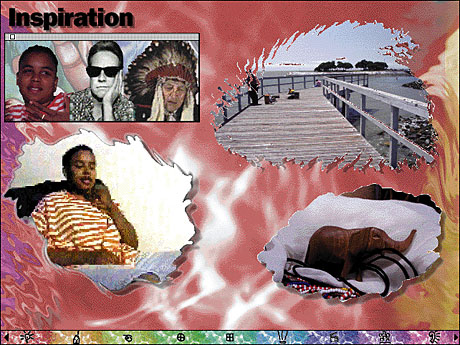Finding Your Voice is a prototype for a product designed to help junior high school students learn to tell stories. In particular, it was designed to help them develop better ways of expressing themselves and telling their personal stories. Although it was not designed as an anti-text product, it was specifically developed with little focus on text and concentrated on verbal and visual storytelling to help pull in those students who traditionally drop out or turn off because they lack well-developed reading and writing skills.
1993
Participants:
Brenda Laurel: Content Expertise, Producer
Abbe Don: Project Management, Interaction Design, Programming
Nathan Shedroff: Information Design, Visual Design, Production
Lucinda deLorimier: Story Development. Content Expertise
Rachel Strickland: Videography
James Cottle: Photography, Production
Amy Jo Bilsen: Animation
This project was organized into nine sections with each representing one step in the process of telling a story or giving a presentation. In each section, one of three guides will share thoughts and experiences about the topic in their own lives and work. In this way, the information is delivered with a maximum of experiential media and a minimum of text. While this product isn’t overtly anti-text, it is consciously trying to communicate in non-textual ways to specifically appeal to the many students who do not feel comfortable with their reading and writing skills and, therefore, do not participate in creative classroom activities as much as others.
The program is structured to be explor-atory and satisfy curiosity while still being clear in its structure and navigation. The links between related materials are not present in this version of the prototype.
In the design of this product’s interface, we consciously tried to appeal to the aesthetic of the “MTV” generation. We explored wild colors and effects and non-rectilinear video windows. There was also a desire to relate imagery and design somewhat to natural phenomenon (the water backgrounds and fire, for example) and build a comfortable “place” for storytelling and one where teenagers can leave behind their insecurities and fears. This is why the main screen and the introductory animation are built around the concept of a “fire circle.”



Recent Comments